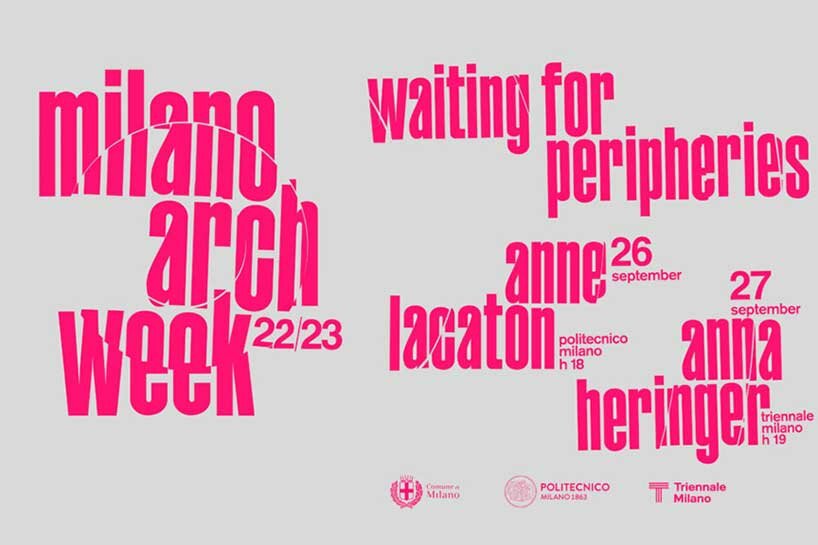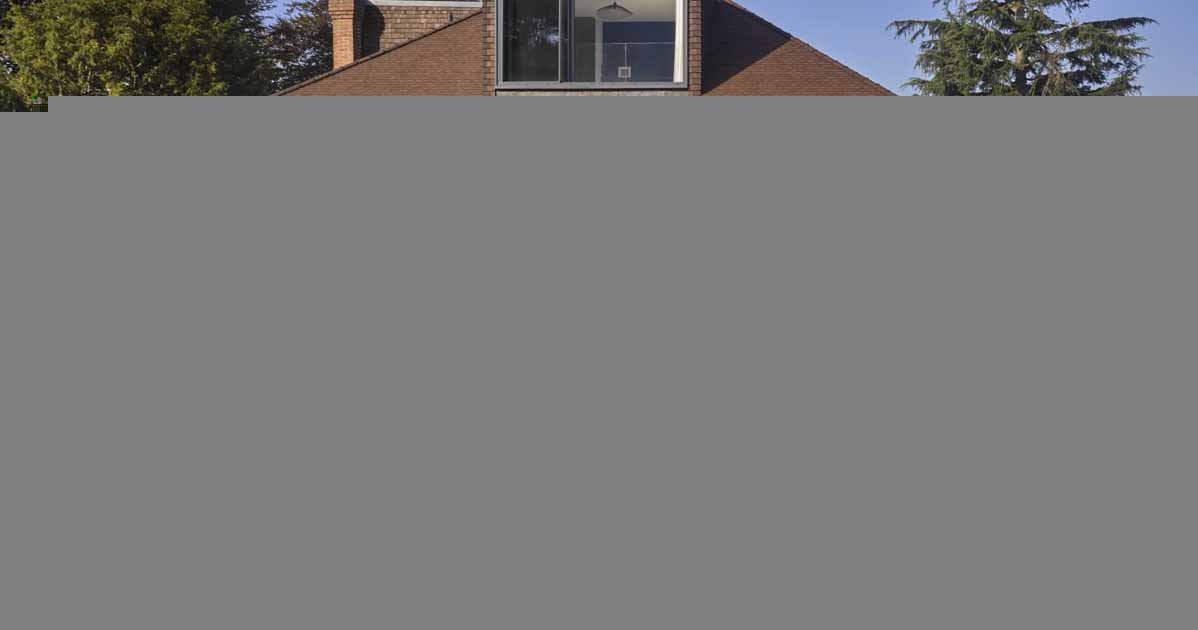anne lacaton & anna heringer speak during milano arch week 2022
milano arch week 2022 gives a foretaste of the 2023 5th edition
Milano Arch Week, the event dedicated to architecture, urban transformations and the future of cities presented two days of lectures and roundtables as a foretaste of the fifth edition, to be held in spring 2023. Titled ‘Waiting for Peripheries’, the event was intended as an opportunity to take stock of the city’s social and cultural forces to open a collective reflection on the theme of the peripheries. Pritzker Prize Winner 2021 Anne Lacaton, and Anna Heringer, winner of the Obel Award 2020 and proponent of sustainable architecture, were invited to inaugurate and give in-depth presentations through selections of their most noteworthy projects.

leading figures in international architecture Anne Lacaton and Anna Heringer were the protagonists of Arch Week 2022
image courtesy of Milano Arch Week 2022
Under the artistic direction of Stefano Boeri, President of Triennale Milano, Arch Week 2022 welcomed two leading figures in international architecture: Anne Lacaton, founder of Lacaton & Vassal Architects, winner of the Pritzker Prize 2021, and Anna Heringer, winner of the Aga Khan Award for Architecture 2007 and the Obel Award 2020. As in previous editions, the opening was held at the Politecnico di Milano on September 26, while on September 27, the day was dedicated to in-depth discussions and debates at the Triennale on the transformation of the hosting Italian city.

Anne Lacaton’s 96 dwellings, Chalon-sur-Saône / Prés-Saint-Jean, 2016 | image © Philippe Ruault
anne lacaton explains the benefits of building transformation
Anne Lacaton, founder of Lacaton & Vassal Architects, opened the two-day event with a detailed and especially thorough presentation on the importance of transforming social housing, and not demolishing. With projects prominently in France, but also Switzerland, Belgium and Denmark, the renowned Architect walked the audience through socio-political, architectural as well personal factors that determine such life-changing decisions.
‘We decided to study very carefully the issue of demolition. The transformation of the existing is crucial and it is part of the solution towards a better city. Even more so, it is about addressing the global climate changes that we are facing and for that, continue to find valuable solutions. For example, it is not enough to just add insulation around the existing structure, but rather raise and elevate the quality of living indoors as well,’ begins architect Anne Lacaton.

‘transformation of the existing is crucial and it is part of the solution towards a better city,’ says Anne Lacaton | image © designboom
In Bordeaux, France, the transformation of the 530 dwellings (see below) consists of 3 inhabited social buildings, originally built in the early 60s. The overall general economy of the project was based on the choice of conserving the existing building without making important interventions on the structure. Elaborated research allowed the addition of extended winter gardens and balconies, which gave the opportunity, for each apartment, to enjoy more natural light, more fluidity of use and far more panoramic views of the city. This approach made it possible to focus the energy on generous extensions of up to 3,80m in depth, leading to an overall spatial increase of 55% for the entire building.
‘This transformation was was a long study. We proposed to extend the size of these dwellings, but without additional construction. When you remove the inhabitants from their space, they never come back, because the process of construction can be so long. Then, after a few years, three years, four years, the people who have families have made a new life somewhere else, thus, they decided to stay there. We, as architects, we have the ability to design the construction in a way that does not get in the way of people’s lives. And something that is really great is that even the UNESCO integrated this neighborhood into the perimeter of protection – this is proof of the recognition of the value of this change,’ adds the Architect.

the transformation of the 530 dwellings, blocks G, H, I | images © Philippe Ruault
Equally developed in the 60s, the 96 dwellings of the Chalon-sur-Saône in Prés-Saint-Jean, France, began their transformation with a raise in height of 4,50m above the natural ground. Done as to avoid flooding below, the construction was limited to the columns and the platforms for the stairs and elevators, keeping the footprint to a minimum, while allowing vegetation to thrive underneath. As the dwellings became bigger, the cost of living remained constant while the quality of life increased exponentially, offering each dwelling a closer relation to nature.
‘Our challenge here was respecting the nature and landscape while raising the blocks 4,50m above the ground. We kept the construction on a minimum level without bringing in huge trucks as we didn’t want to disturb neither the wildlife nor the trees. Here, through the sustainable master planning, the architecture itself sustains the place while connecting it to the design,’ explains Anne Lacaton.

96 dwellings, Chalon-sur-Saône / Prés-Saint-Jean, 2016 | images © Philippe Ruault
‘Never Demolish, never substract, remove or replace. always add, transform and utilize with and for the inhabitants,’ concludes Anne Lacaton with her last slide.





